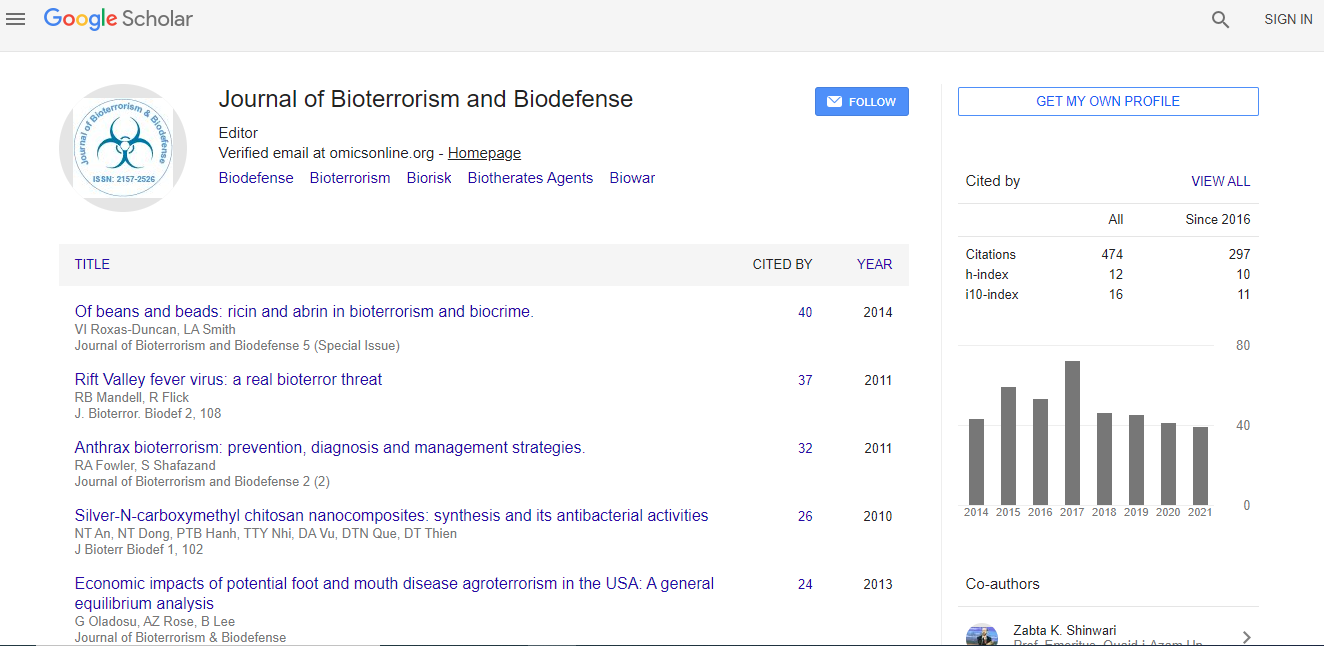Research Article
Discerning Viable from Nonviable Yersinia Pestis pgm- and Bacillus Anthracis Sterne using Propidium Monoazide in the Presence of White Powders
Becky M. Hess*, Brooke L. Deatherage Kaiser, Michael A. Sydor, David S. Wunschel, Cynthia J. Bruckner-Lea and Janine R. Hutchison
Chemical and Biological Signature Sciences, Pacific Northwest National Laboratory, Richland, Washington, United States of America
- *Corresponding Author:
- Becky M. Hess
Pacific Northwest National Laboratory
902 Battelle Boulevard, P.O. Box 999
MSIN: P7-50, Richland, WA 99352, USA
Tel: 509-372-6792
Fax: 509-375-2227
E-mail: Becky.Hess@pnnl.gov
Received Date: August 05, 2015; Accepted Date: November 20, 2015; Published Date: November 26, 2015
Citation: Hess BM, Kaiser BLD, Sydor MA, Wunschel DS, Lea CJB, et al. (2015) Discerning Viable from Nonviable Yersinia Pestis pgm- and Bacillus Anthracis Sterne using Propidium Monoazide in the Presence of White Powders. J Bioterror Biodef 6:138 doi: 10.4172/2157-2526.1000138
Copyright: © 2015 Hess BM, et al. This is an open-access article distributed under the terms of the Creative Commons Attribution License, which permits unrestricted use, distribution, and reproduction in any medium, provided the original author and source are credited.
Abstract
Purpose of the study To develop and optimize an assay to determine viability status of Bacillus anthracis Sterne and Yersinia pestis pgm- strains in the presence of white powders by coupling propidium monoazide (PMA) treatment with real-time PCR (qPCR) analysis. Approach and results After gaining entry to intracellular space, PMA can be exported by metabolically active cells. The PMA remaining in nonviable cells binds DNA, thereby increasing qPCR assay cycle threshold (CT) values compared to untreated samples. Dye concentration, cell number and fitness, incubation time, inactivation methods, and assay buffer were optimized for a Gram-positive pathogen, B. anthracis Sterne, and a gram negative pathogen, Y. pestis pgm-. Differences in CT values in nonviable cells compared to untreated samples were consistently > 9 for both B. anthracis Sterne vegetative cells and Y. pestis pgm- in the presence and absence of three different white powders. Our method eliminates the need for a DNA extraction step prior to detection by qPCR. Significance of the Study The method developed for simultaneous detection and viability assessment for B. anthracis and Y. pestis can be employed in forming decisions about the severity of a bio threat event or the safety of food.

 Spanish
Spanish  Chinese
Chinese  Russian
Russian  German
German  French
French  Japanese
Japanese  Portuguese
Portuguese  Hindi
Hindi 